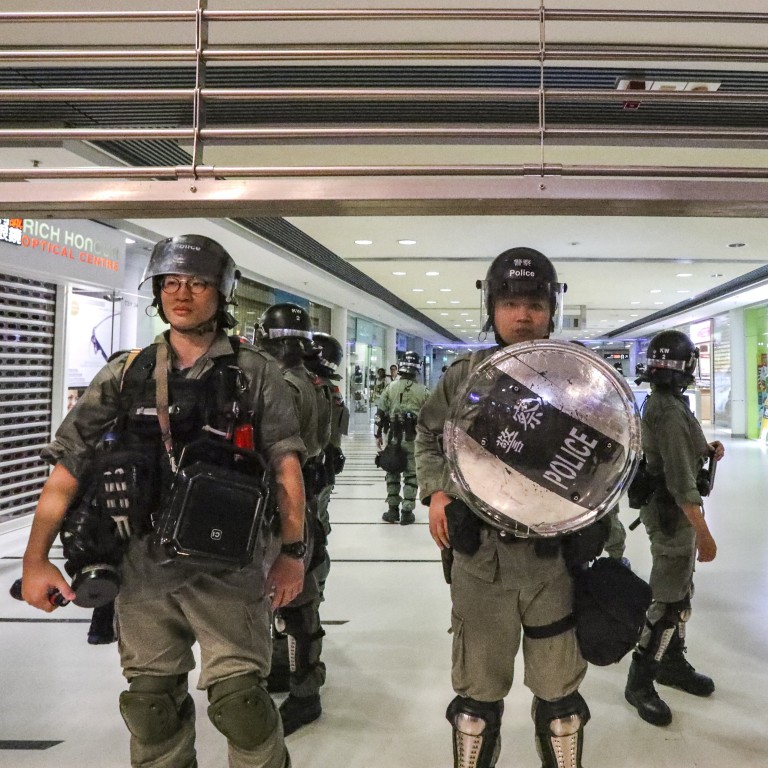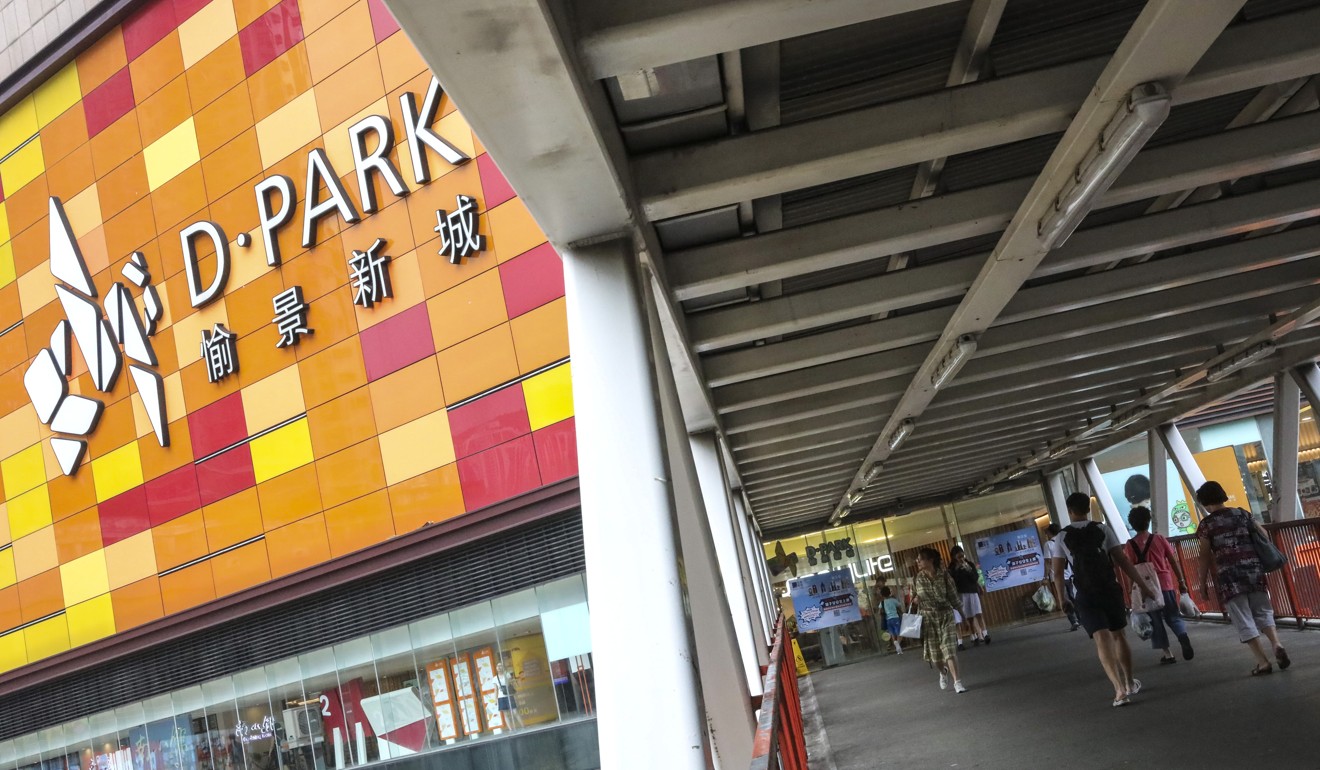
When protest-linked mall closures leave Hong Kong residents cut off
- In many districts, shopping centres serve as essential infrastructure, linking up areas with footbridges and passageways which rarely close
- So when their managers pull down the shutters fearing unrest, many end up stranded and angry – with more than 100 complaints to the government this month
“My mother can’t go up and down the long staircase. The footbridges and the passageways inside the malls are important paths for us to go to the clinic at the other end of Tsing Yi,” said the 55-year-old retiree, who lives on a public housing estate in the district.
Many Hong Kong residents blame government as malls, MTR remain closed
“Tsing Yi was quite peaceful, with no protesters around,” said Yim, who did not want to give his full name, saying even a complaint about mall closures could become a sensitive issue in an increasingly polarised society.
But during the day, the mall’s management announced that, “in view of possible public order events”, the mall would be shut. It came after previous protest actions inside city malls led to major disruption to shops or even violent clashes with police.
Yim was unimpressed, saying: “Closing the malls without any prior notice here was an irresponsible act. We even had to skip a medical appointment for this.”
The two phases of Tsing Yi Maritime Square were among at least 20 Hong Kong malls closed during days of intense protest this month. They also closed on October 1 because of the chance of disturbances. Since early October, the Lands Department has received 120 complaints concerning the sudden closure of public passageways through malls.
Like similar facilities across Hong Kong, the two phases, both atop Tsing Yi MTR station are designed as the convenient centres of the neighbourhood. The malls serve as important connectors between areas, joining them with footbridges and passageways that remain open around the clock. When granting land to malls’ developers, the government adds various clauses to lease agreements to ensure passageways remain open for most of the day.
‘Protests highlight need for new role’ for Hong Kong in Greater Bay Area
The “public space in private place” policy aims to let people get around via malls, without having to go to street level to find their way dissected by roads.
But urban planners now say the closures and complaints have exposed the limitations of this policy, which can leave residents at the mercy of mall management.
Also inconvenienced on October 5 was Cat Lai, who works in Tsing Yi. “The path that links to the bus terminal on the upper ground floor was very difficult to access when the mall was closed,” she said. “Young people are still flexible to move around, but for the elderly and disabled, the closure was simply inconvenient.”

Local concern group Tsing Yi People gathered more than 1,500 signatures for a complaint to Lands Department afterwards.
D-Park in Tsuen Wan and Olympian City in Tai Kok Tsui were among the 20 malls closed on protest-hit days, some of them also preemptively.
Cherie To, who lives in Discovery Park, which is attached to D-Park mall, said: “The mall reopened the passageways after management received complaints. Originally we were unable to walk through it. We understand there could be a risk, but it seems unreasonable to shut down everything when there were no protests going on around the district.”
Architects design malls aimed at making things easy for residents and keeping shoppers around. They would never have thought this kind of emergency closure could happen
The Lands Department said it would look into the complaints. “If the breach is substantiated, the department will take appropriate lease enforcement actions,” a spokeswoman said.
If protesters behave then MTR could return to normal after next week
However, the department also highlighted that closures under emergency situations or other safety risks were acceptable, as long as they were in “reasonable circumstances and not more than necessary”.
The management company for D-Park, owned by New World Development, said the mall and passageways were closed to ensure public safety after careful assessment. It said it would make appropriate arrangements for pedestrian access depending on the circumstances.
Barrister Duncan Ho Dik-hong said most land leases give property managers the power to dictate access to passageways, and the Lands Department should let the public know how it would deal with the closures, because they could become a regular occurrence.

Lee Ho-yin, head of the University of Hong Kong’s architectural conservation programmes, said malls had become a common feature in many neighbourhoods since the 1980s.
“Architects design malls aimed at making things easy for residents and keeping shoppers around. They would never have thought this kind of emergency closure could happen,” he said.
Architect Vincent Ng Wing-shun believed the problems lay in the granting of power to private developers to run public space.
“It all depends on how the government drafted the lease and whether property owners are abiding by the terms,” Ng said. “If there is a request that the passageways stay open 24 hours, then they should only close under really emergency circumstances.”
Noting that developers generally get preferential lease deals when they agree to provide civic facilities, he said: “They should consider the public more.”

